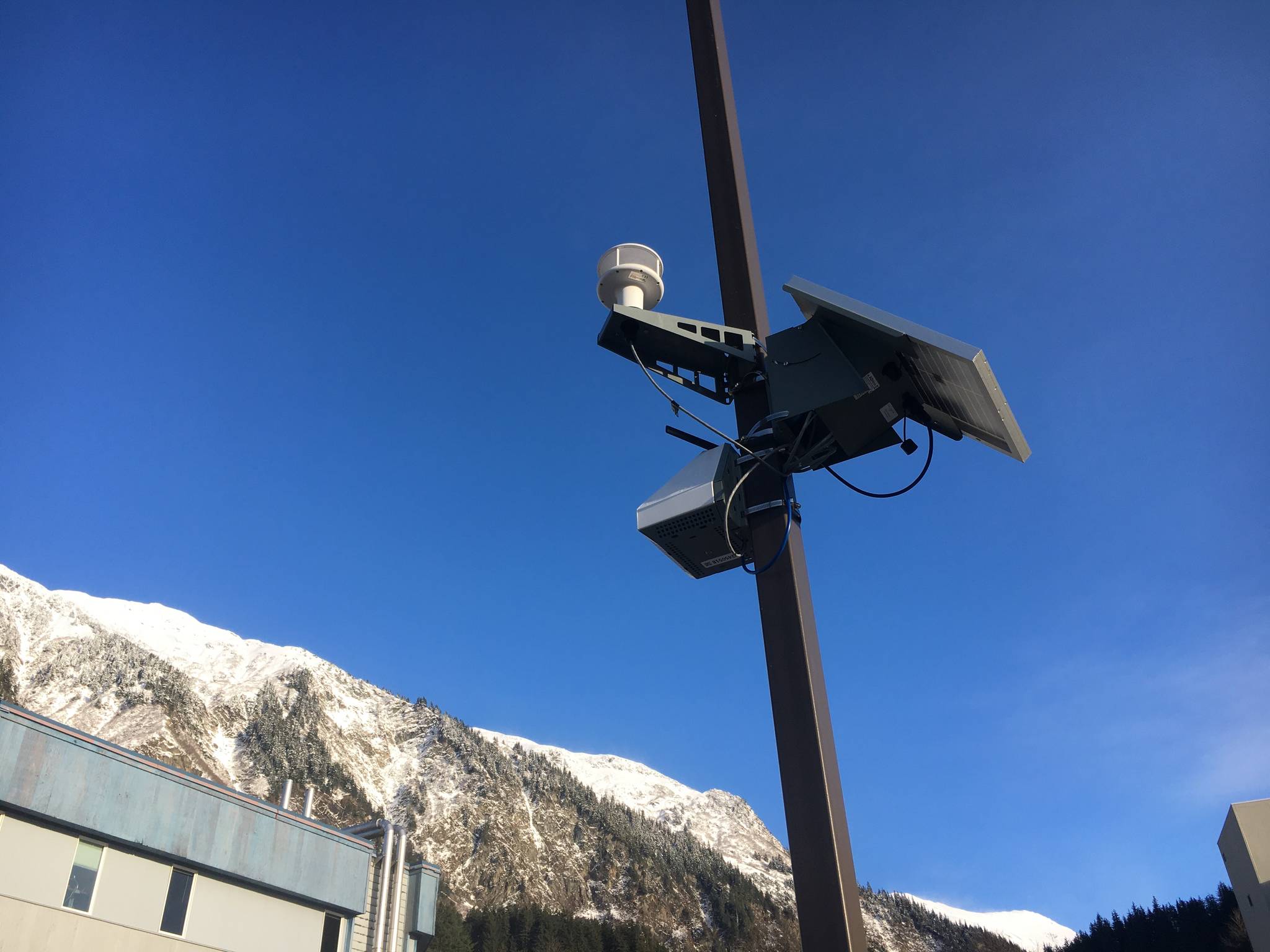The Alaska Department of Environmental Conservation is spearheading a new program with air quality sensors in downtown Juneau.
“The sensors are placed as a follow up to the pilot study DEC conducted in 2019. That study used PurpleAir low cost sensors to measure particulate matter. Our attempt to use passive sensors for SO2 (sulfur dioxide) samplers proved not to be sensitive enough to detect the short-term spikes we observed from cruise ship activity in the downtown area,” said Barbara Trost, a program manager with DEC. “The new technology provides gaseous pollutant and particulate matter information every 15 minutes, which will allow a more refined look at emissions sources impacting Juneau.”
The effects of the giant engines powering the cruise ships in the summer have long been a source of concern. This project, Trost said, will help provide more accurate data over several seasons.
[Young says he’s on road to recovery after being admitted to hospital]
“We hope to keep these sensors in the downtown Juneau area for the next few years dependent on funding. We also sent two sensors to Ketchikan, one of which is reporting as well,” Trost said. “We have three sensor pods that we are planning to deploy in other Southeast Alaska cruise ship ports next spring. The intent is to continue to collect data, while also providing real time data access to the public.”
The pods, which are affixed to light poles or utility stands, cost about $13,000 per unit, Trost said. Pods are located on Sixth Street, 10th Street, and Whittier Avenue. The data is available to the public on the DEC’s website. So far, the site shows three sensors in Juneau.
Trost said they’re going to assess the sensor’s efficacy over the winter before deciding to keep them up year round.
“We only started working with these sensors this summer and do not have experience with them in cold temperatures. We do not know how the sensors will handle icing, freezing, or high winds,” Trost said. “If the sensors either stop working all together or the data looks questionable, we will take them down.”
• Contact reporter Michael S. Lockett at (757) 621-1197 or mlockett@juneauempire.com.

